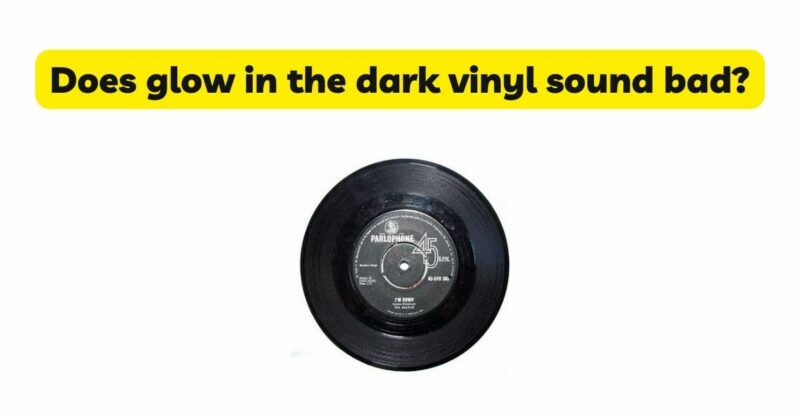Glow in the dark vinyl has gained popularity among vinyl enthusiasts due to its unique visual appeal and the enchanting glow it emits in low-light settings. However, there has been ongoing speculation about whether the addition of phosphorescent materials to vinyl records impacts their sound quality. In this article, we delve into the subject to uncover the truth behind the sonic performance of glow in the dark vinyl. By examining the composition, manufacturing process, and listener experiences, we aim to debunk any misconceptions and provide a comprehensive understanding of the topic.
Composition and Manufacturing Process of Glow in the Dark Vinyl: Glow in the dark vinyl is made by incorporating phosphorescent pigments or additives into the vinyl compound during the manufacturing process. These pigments are responsible for absorbing and storing light energy, which is then released as a visible glow in low-light conditions. It is important to note that the addition of phosphorescent materials should not inherently affect the sonic characteristics of the vinyl.
Sound Quality Factors: Several factors influence the sound quality of vinyl records, regardless of whether they are glow in the dark or traditional black vinyl. These factors include the quality of the mastering, pressing techniques, record handling, and the overall manufacturing standards employed. The performance of glow in the dark vinyl largely depends on the attention to detail during production, rather than the presence of phosphorescent materials.
Manufacturing Standards and Quality Control: The quality of glow in the dark vinyl can vary depending on the manufacturing standards and quality control measures implemented during production. Like any vinyl record, the sonic performance of glow in the dark vinyl is influenced by factors such as accurate stamper alignment, proper groove depth, and effective removal of impurities. High-quality pressing plants ensure that the addition of phosphorescent materials does not compromise the overall sound quality.
Listener Perception and Bias: Perception plays a vital role in evaluating sound quality. Some listeners may hold preconceived notions or biases about glow in the dark vinyl, assuming that its visual appeal comes at the expense of sonic performance. However, it is crucial to approach such judgments with objectivity and consider the impact of psychological factors, such as confirmation bias or the placebo effect, which may influence subjective experiences and evaluations.
Subjective Listening Experiences: Subjective experiences vary among individuals, and some listeners may claim to hear subtle differences between glow in the dark vinyl and traditional black vinyl. However, it is essential to consider the influence of psychological factors, as well as the potential for variations in mastering or pressing quality, rather than solely attributing any perceived differences to the presence of phosphorescent materials.
Playback Equipment and System: The quality of the playback equipment and system used to listen to vinyl records significantly affects the sound reproduction. Investing in high-quality turntables, cartridges, amplifiers, and speakers ensures accurate sound reproduction, regardless of the vinyl type. Therefore, the overall listening experience of glow in the dark vinyl can be optimized by using a well-maintained and calibrated audio setup.
Enjoyment of Glow in the Dark Vinyl: Glow in the dark vinyl offers a unique and visually captivating experience that appeals to many vinyl enthusiasts. The luminous glow adds a special ambiance to listening sessions and can enhance the overall enjoyment of the vinyl collecting hobby. While sound quality is important, the enjoyment derived from glow in the dark vinyl should primarily come from its visual appeal and the magical atmosphere it creates.
Conclusion: In conclusion, the notion that glow in the dark vinyl sounds bad is largely a misconception. The addition of phosphorescent materials does not inherently compromise sound quality. Like any vinyl record, the sonic performance of glow in the dark vinyl is influenced by various factors such as manufacturing standards, mastering quality, pressing techniques, and playback equipment. While some listeners may claim to perceive subtle differences, it is important to approach such claims with objectivity and consider the influence of subjective perception and biases. Ultimately, the enjoyment of glow in the dark vinyl should be based on its visual appeal and the enchanting experience it provides, rather than solely on its sonic performance.


